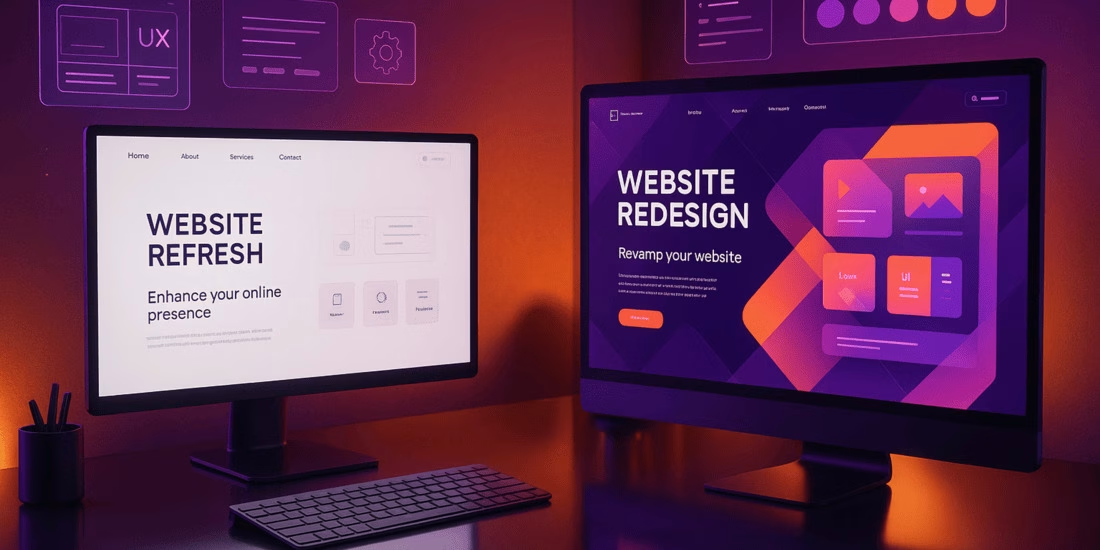
In today’s digital world, your website isn’t just a digital brochure – it’s the backbone of your brand, visibility, and user experience. But when your site starts to feel slow, clunky, or outdated, it’s time to take a closer look. Should you make a few smart updates or rebuild from scratch?
There are two clear paths: a full website redesign or a strategic website refresh. A redesign typically involves rethinking your site’s layout, structure, and content from the ground up. A refresh, on the other hand, focuses on minor modifications – revamping visuals, updating copy, or refining user flows while preserving the core architecture.
Not every site needs a ground-up rebuild. If your site still functions well and aligns with your brand, a refresh might be enough to keep things current. But if the entire experience feels off – visually, structurally, or technically, a full redesign is the better move. Companies now invest in website redesigns every 1.5 to 2.5 years on average, far more frequently than in the past.
This article breaks down the key differences between a website refresh and a website redesign, helping you choose the right approach based on performance, goals, and where your business is headed next.
Table of Contents
What Is a Website Refresh?

A website refresh is a light-touch update that enhances your existing website without altering its core structure or underlying architecture. It typically includes visual and content improvements, like updating brand colours, modernising typography, swapping out outdated images, or editing stale content. You might also refine user experience elements by repositioning CTA (calls-to-action), simplifying navigation, or adjusting layout sections on key pages.
Think of it as a digital facelift. The bones of your site stay the same, but the overall look and feel get an upgrade to better match your evolving brand identity or marketing goals.
According to Clutch, 81% of users think less of a brand if the website is outdated, so even small improvements can have a significant impact. In many cases, a refresh is all that’s needed to keep your digital presence sharp, relevant, and aligned with your brand’s growth.
What Is a Website Redesign?

A website redesign is a comprehensive overhaul that typically includes changes to your site’s layout, navigation, visual identity, and often even its underlying platform or content management system (CMS).
Unlike a website refresh, which updates specific elements, a website redesign rethinks the entire digital experience. This process is more strategic, driven by the need to address performance issues, align with a new business direction, or deliver a significantly better user experience.
Design is one of the most critical elements of a website’s success. Research shows that 94% of users’ first impressions are design-related. So, if your website isn’t making the right first impression or any impression at all, a redesign isn’t just a nice-to-have. It’s a necessity.
How to Decide: Pros, Cons, and Key Differences
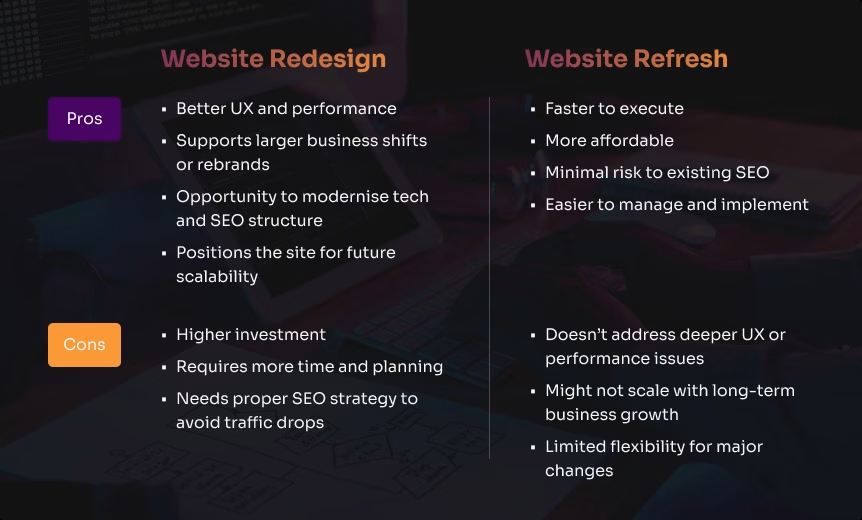
Choosing between a website refresh and a full redesign isn’t just a question of cost or timelines. It’s about matching the solution to your goals, challenges, and where your business is headed. Each option has its strengths, limits, and ideal use cases.
Here’s how they compare:
Website Refresh – Pros
- Faster to execute
- More affordable
- Minimal risk to existing SEO
- Easier to manage and implement
Website Refresh – Cons
- Doesn’t address deeper UX or performance issues
- Might not scale with long-term business growth
- Limited flexibility for major changes
Website Redesign – Pros
- Better UX and performance
- Supports larger business shifts or rebrands
- Opportunity to modernise tech and SEO structure
- Positions the site for future scalability
Website Redesign – Cons
- Higher investment
- Requires more time and planning
- Needs proper SEO strategy to avoid traffic drops
Quick Comparison at a Glance
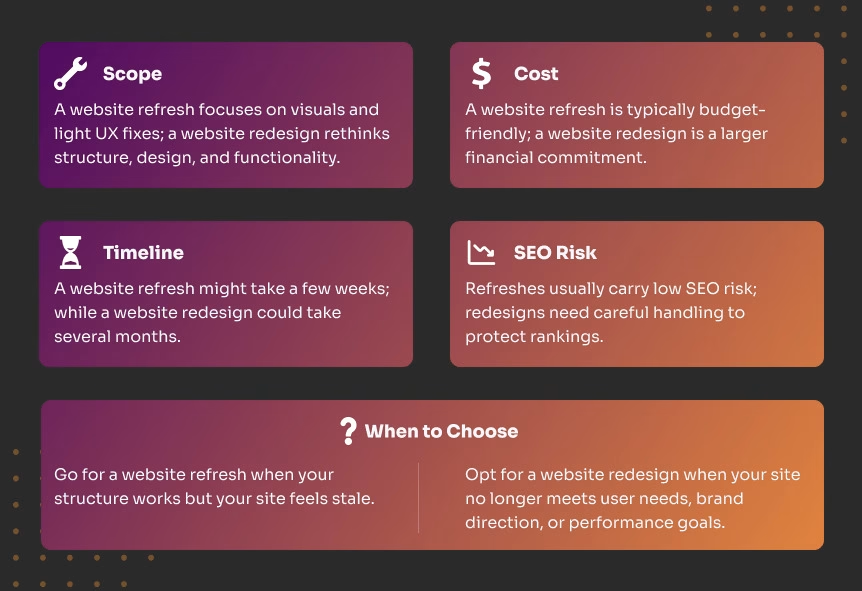
- Scope: A website refresh focuses on visuals and light UX fixes; a website redesign rethinks structure, design, and functionality.
- Cost: A website refresh is typically budget-friendly; a website redesign is a larger financial commitment.
- Timeline: A website refresh might take a few weeks; while a website redesign could take several months.
- SEO Risk: Refreshes usually carry low SEO risk; redesigns need careful handling to protect rankings.
- When to Choose:
- Go for a website refresh when your structure works but your site feels stale.
- Opt for a website redesign when your site no longer meets user needs, brand direction, or performance goals.
When to Choose a Website Refresh?

A website refresh is the right move when your site’s core structure is still solid, but the visuals, messaging, or user experience feel slightly off. Maybe the brand colours are outdated, or the homepage layout feels a bit tired. These are common signals that your site could use a visual or content update, not a full rebuild.
If users are still finding what they need and conversions are steady, a refresh is often the right call. You’re keeping what works and improving what doesn’t. It’s a smart option when you want to make improvements without committing to a full-scale project. Think of it as recalibrating, not rebuilding. It’s an effective way to keep your site up to date, make the design feel more cohesive, and reflect how your brand is growing.
Most common reasons to consider a website refresh:
- The content is outdated, but the site’s structure still functions well
- The design feels inconsistent or visually dated
- Your content is still working, but the visuals don’t reflect your current positioning
- Brand guidelines have changed and your visuals no longer align
- You’re preparing for a short-term campaign or product launch and need a more polished presentation
- The site is performing reasonably well, but you’d like to increase engagement with subtle UX tweaks
- There are minor usability issues that need attention without rebuilding the entire site
Done well, a refresh boosts credibility and keeps your digital presence aligned with your business without the time and cost of starting over.
When to Choose a Website Redesign?

A full website redesign makes sense when your current site is holding you back. If your brand has moved forward but your website hasn’t, or if users are leaving before they take action, patching up won’t cut it.
At this stage, it’s not about small tweaks. It’s about rethinking how your site works from the ground up: layout, navigation, tech stack, performance, content. A solid redesign looks at the full picture: what users need, where the site falls short, and how to make it all work better.
This kind of overhaul often lines up with bigger shifts in your business, like new goals, a different target audience, or a clearer offer. It’s not just about updating the look – it’s about creating a site that actually supports where your brand is going.
Good design isn’t just about looks. According to usability benchmarks, 38% of users will leave a website if it feels unattractive or hard to use. Even more compelling: landing page stats show that great UX design can increase conversion rates by up to 400%.
Most common reasons for a website redesign are:
- Outdated visuals that make your brand look behind the times
- Clunky technology that’s hard to update or doesn’t support modern features
- Poor mobile performance
- UX issues that frustrate visitors or create dead ends in the user journey
- Low engagement and poor conversion rates, despite good traffic
- Confusing site navigation that prevents users from finding what they need
- Customer feedback pointing to usability or visual design problems
- A major brand shift, like a new visual identity or messaging framework
- Your offerings and audience have changed
If your site is underperforming, a website redesign isn’t a luxury – it’s a business necessity. A strategic redesign aligns your digital presence with where your brand is headed, not where it used to be.
5 Types of Website Redesign

Not all redesigns are the same. Depending on what’s broken or just outdated you’ll approach the website redesign process differently.
Here are the core types of website redesigns we are typically deal with:
1. Visual Redesign (UI-focused)
This is for when the look just isn’t cutting it anymore. Fonts, colours, imagery, layout spacing – if it feels stuck in 2015, a visual redesign refreshes your brand presence without tearing everything down. The structure stays mostly intact, but the face gets a proper update.
2. Experience Redesign (UX + UI)
If users are bouncing, getting lost, or not converting, the problem runs deeper than colour schemes. This type digs into user flow, site structure, navigation, and overall usability. It’s the right move when your site “works” on paper but frustrates people in practice.
3. Technical Redesign (Backend/Platform)
When your CMS is clunky, performance is slow, or your tech stack can’t support your current needs, it’s time to rebuild under the hood. This might mean switching platforms, improving load times, boosting security, or making the site more scalable and SEO-friendly.
4. Full Strategic Redesign
This is the all-in version. You’re changing design, structure, tech, messaging – everything. It’s usually tied to a major shift like a rebrand, a new product focus, or targeting a completely different market. It’s a reset that sets you up for the next chapter.
5. Iterative Redesign (Data-Led or Evolutionary)
If you have the time and data, some teams choose to redesign gradually. You make smart, incremental updates based on real user behaviour and feedback. It’s less risky, easier to manage, and helps avoid the performance dip a full relaunch can sometimes cause.
Ginger Team’s Opinion on Website Redesign
There was a time when a website was just a box to tick – basic, static, and mostly there for show. That time’s over. Today, your site does the heavy lifting: it’s often your top sales tool, your first impression, and the thing people judge your brand by.
If your site is outdated – visually, technically, or both – it’s not just underwhelming. It’s costing you leads. User expectations change fast. A design that felt modern three years ago might now feel clunky. People expect fast, intuitive, and mobile-friendly experiences. If they can’t find what they need quickly, they leave.
A lot of clients come to us because their current site is holding them back. And they’re right to worry – first impressions still matter. Especially on mobile, where performance and usability aren’t optional.
That’s why we see website redesigns as more than just cosmetic updates. It’s a chance to rebuild around what matters: better structure, smoother navigation, and interfaces that actually help people take action.
This isn’t about chasing trends. It’s about knowing what slows users down, what drives them to leave, and what turns interest into conversion. Those brands that see their site as a living part of the business – not a one-off project – tend to get better results.
Take Bencom, one of our recent redesign projects. We reimagined their entire digital presence – from visual identity to mobile performance. The outcome was a clean, fast, conversion-focused site that makes their value clear at a glance.
You can explore the full project here.
Bencome Website Old Version
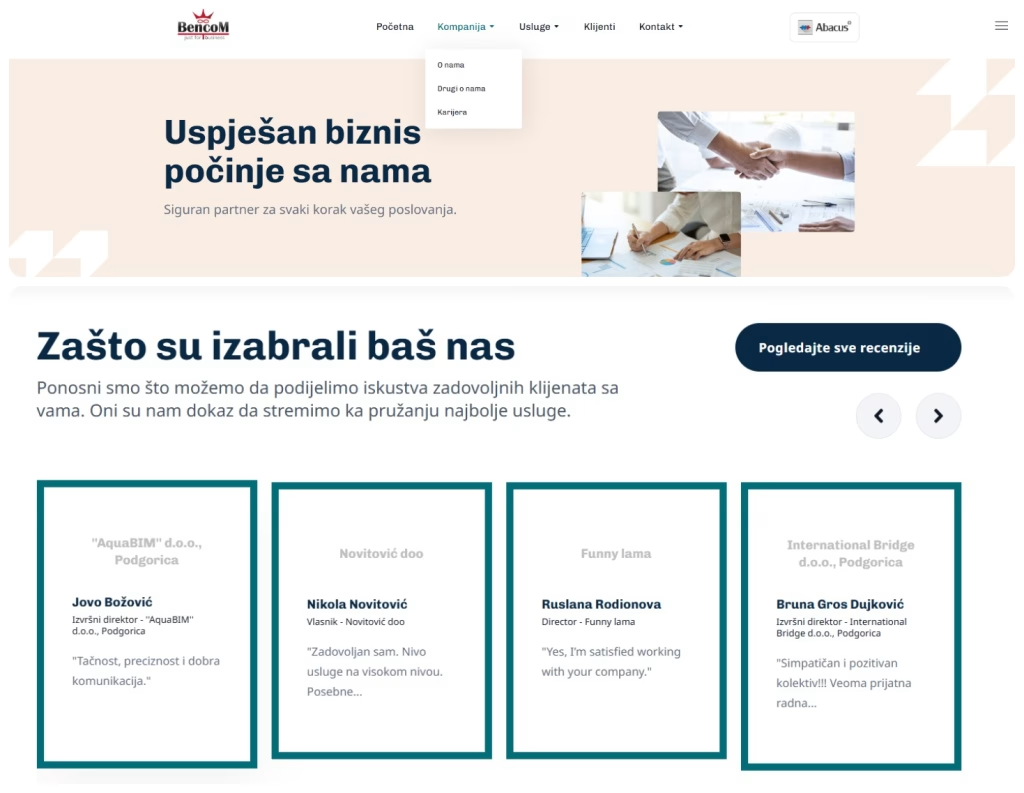
Bencom Website Redesign
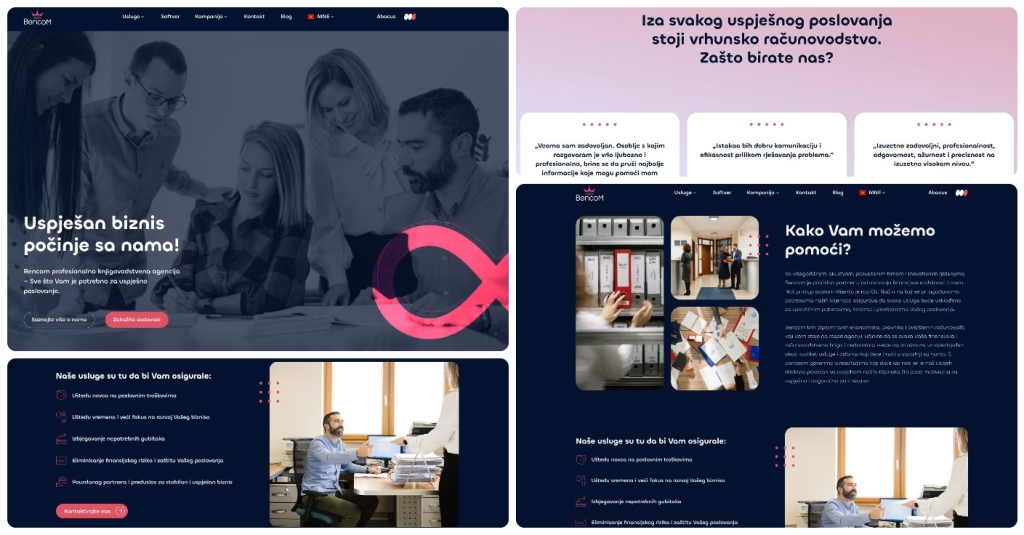
Final Thoughts
Choosing between a website refresh and a website redesign comes down to scope, urgency, and business objectives. While a refresh can offer a quick win for a modest budget, a redesign is better suited for deeper issues that affect functionality, usability, and growth.
For businesses ready to make that decision, partnering with an experienced web design agency can make the process more effective and strategic. Ginger IT Solutions doesn’t just update layouts – it evaluates your site’s role in achieving business goals, rethinks user journeys, and aligns every detail with your long-term vision.
If you’re thinking about a redesign or exploring what a refresh can deliver, it’s worth having that conversation. We also make sure your SEO is protected or improved during the process, so you don’t lose visibility while upgrading your site.
Want to dig deeper? Explore our Website Redesign Checklist for a detailed breakdown of what’s involved.
FAQ
1. How often should you refresh or redesign your website?
Most businesses benefit from a refresh every 1-2 years and a full website redesign every 3-4 years, depending on performance and branding needs.
2. How much does a website refresh cost compared to a redesign?
A refresh is generally less expensive and quicker to implement. Redesigns require more time, planning, and budget. We explained the key factors that can impact the cost of a website redesign in this article.
3. How do I know if my site just needs a refresh?
If the structure is solid and you’re happy with how it functions, but the content or design feels outdated, a refresh is likely enough.
4. Will a redesign hurt my SEO?
It can if not handled properly. But with good planning, redirects, and SEO audits, a redesign can actually improve your SEO and rankings.
5. What are the first steps in planning a website redesign?
Start by auditing your current site – identify what works, what doesn’t, and what’s missing. Define your business goals, target audience, and key performance metrics. Then, gather input from users and stakeholders before outlining a clear redesign strategy.
6. Should I rewrite all the content during a redesign?
Not always. If the content still aligns with your brand voice, audience needs, and SEO goals, you can reuse or lightly edit it. But if it’s outdated, poorly structured, or no longer converting, it’s worth revisiting during the redesign process.

